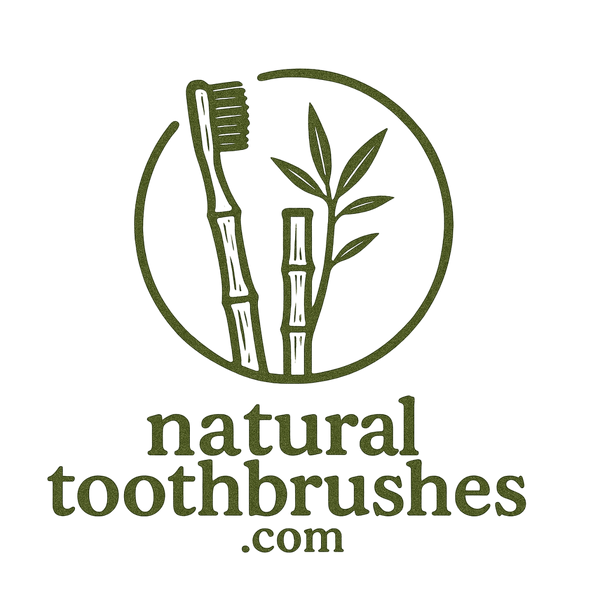How to Care for Your Bamboo Toothbrush
Share
Let’s be real—switching to a bamboo toothbrush feels like a small but powerful act of rebellion against the plastic-drenched world we live in. You make the switch, and suddenly brushing your teeth feels... earthy. Responsible. Like you’re one step closer to being the kind of person who composts and remembers to bring their tote bag to the grocery store.
But—and this is a big but—if you don’t take care of your bamboo toothbrush, things can get real funky real fast. I’m talking mold, fraying bristles, and that weird sour smell no one wants near their mouth.
So let’s talk about how to care for your bamboo toothbrush properly—so it lasts longer, stays clean, and doesn't betray your efforts to be a better human.
First Things First: Bamboo Is Not Plastic
This seems obvious, but it’s worth emphasizing: bamboo is a natural material. That’s the whole point, right? It’s biodegradable, sustainable, and antimicrobial to a degree—but it’s still wood. And wood, when left damp in a dark place (like, say, the side of your sink), will start to grow things. Spores. Funk. Fuzzy friends.
So if you're treating your bamboo toothbrush like your old plastic one—leaving it wet, letting it sit in a grimy cup—you're basically inviting mold to your morning routine.
Here’s how to keep it fresh:
1. Rinse It—Like, Actually Rinse It
After each use, give your toothbrush a solid rinse. Not just a lazy splash under the faucet. You want to get all the toothpaste residue off the bristles and handle. Toothpaste gunk is like a buffet for bacteria. Get rid of it.
2. Dry It Like You Mean It
This is the big one. If you learn nothing else from this blog post, remember this:
Let. It. Dry. Completely. Between. Uses.
Pro tip? Don’t store your toothbrush in a closed cabinet or drawer. Let it breathe. Keep it standing upright in a well-ventilated area. If your brush sits in a cup, make sure the bottom isn’t collecting water. Better yet—rest it on a toothbrush holder that allows airflow from all sides.
Some people even lay it flat on a towel to dry. Is that overkill? Maybe. But it works.
3. Avoid Toothbrush Jails (AKA Plastic Covers)
You know those little plastic snap-on caps that promise “sanitary storage”? Throw them away. They're the toothbrush equivalent of sealing a damp sponge in a Ziploc bag and praying it doesn’t grow legs.
Trapped moisture = mold party. Bamboo doesn’t do well when smothered.
4. Rotate Your Brushes
Bamboo brushes last around 3 months, just like conventional ones. Maybe longer if you baby them, but let’s not get greedy. If the bristles start looking splayed, or if the brush just starts feeling... tired? Retire it.
And hey—we’ve got a whole collection of bamboo toothbrushes with charcoal bristles that are as good-looking as they are good for your mouth. Keep a few on hand and rotate ‘em in when needed.
5. Speaking of Charcoal...
If you’ve gone the charcoal-infused bristle route (bless you, your breath smells amazing), then you already know the benefits: odor control, whitening, antibacterial properties... it’s like brushing with tiny superheroes.
But if you haven’t explored that world yet, start with this post about the benefits of charcoal-infused toothbrushes. It’s basically a love letter to your mouth.
6. What to Do If You See Mold
It happens. Especially in humid bathrooms or if you’ve been a little, um, casual with your drying habits. If you spot black or green mold on the handle—toss it. Don’t try to salvage it. You wouldn’t eat a moldy sandwich, right?
Mold on your toothbrush = hard no.
7. Dispose of It the Right Way
The whole beauty of bamboo is that it returns to the earth. When it’s time to say goodbye, pull out the bristles (use pliers if you’re feeling dramatic) and compost the handle. Or get creative—some people use old bamboo brushes for cleaning grout, brushing pets, or labeling their garden plants.
We’ve even had customers turn them into art. No judgment.
If you’re curious, our full collection of natural toothbrushes includes a few options that’ll look cute and decompose when you're done with them.
Final Thoughts (From Someone Who's Been There)
Listen. I’ve left bamboo brushes in a travel bag for two weeks. I’ve watched them come out fuzzy and ashamed. I’ve learned the hard way that mold doesn’t care how sustainable your toothbrush is.
But once you get into the rhythm of caring for it—drying it right, replacing it on time, choosing quality over quantity—it just becomes second nature.
And every time you brush, you’ll feel that subtle satisfaction. That tiny, daily win. You’re doing something good for your mouth and the planet.
And that’s pretty damn cool.
Ready to upgrade your brushing game? Check out the full lineup at NaturalToothbrushes.com.
We’re out here trying to make your mouth (and the Earth) a better place—one toothbrush at a time.
